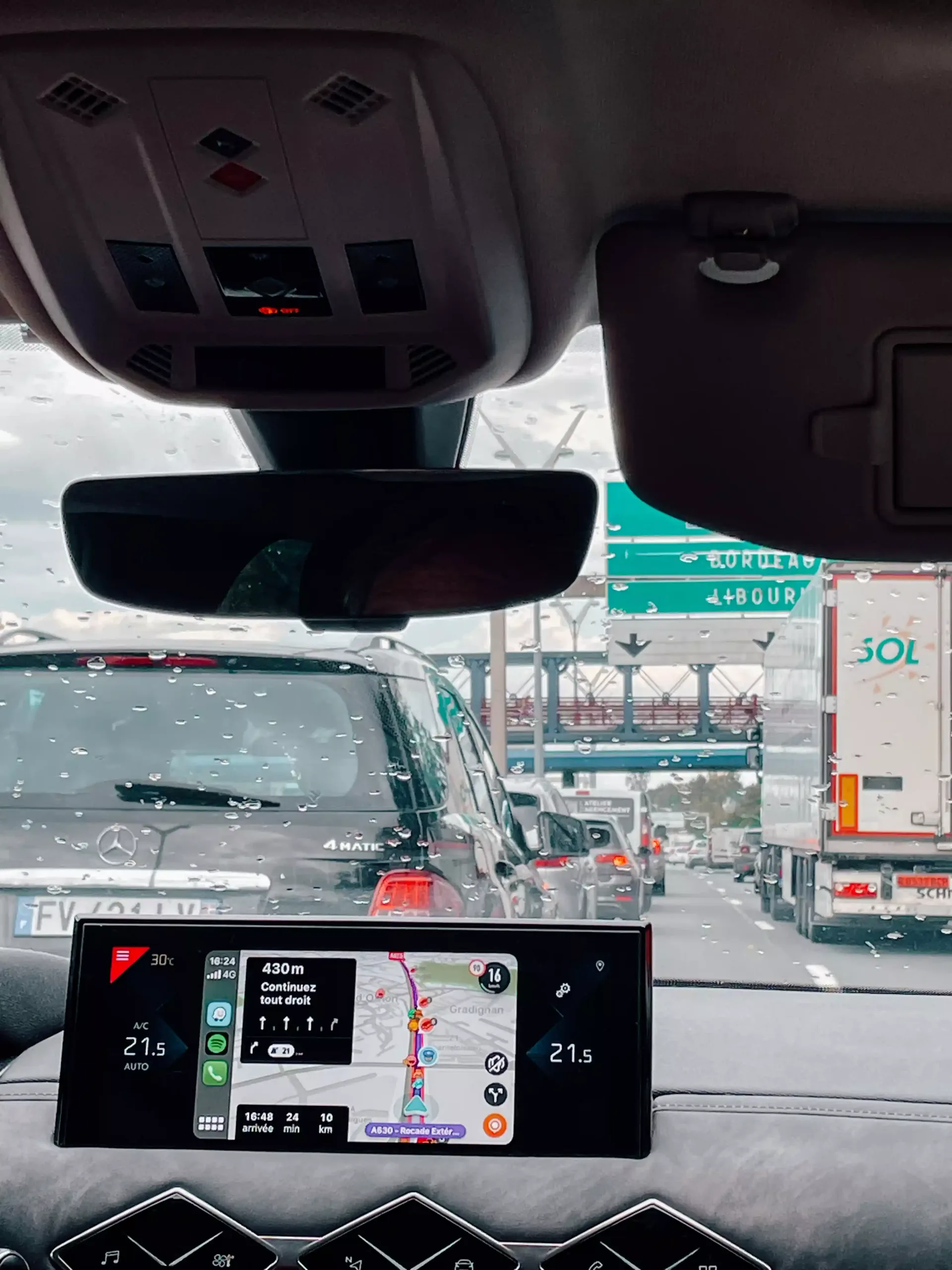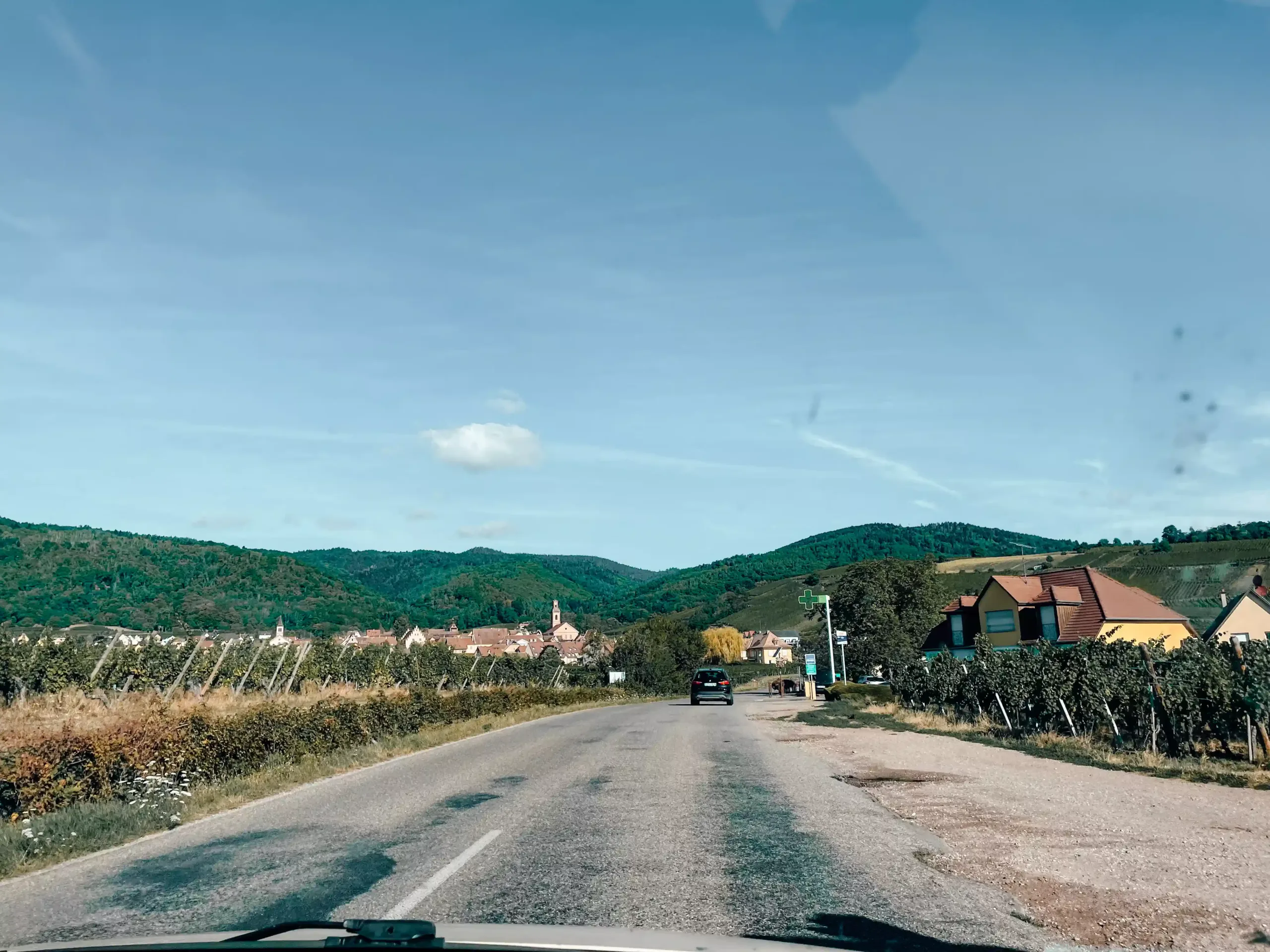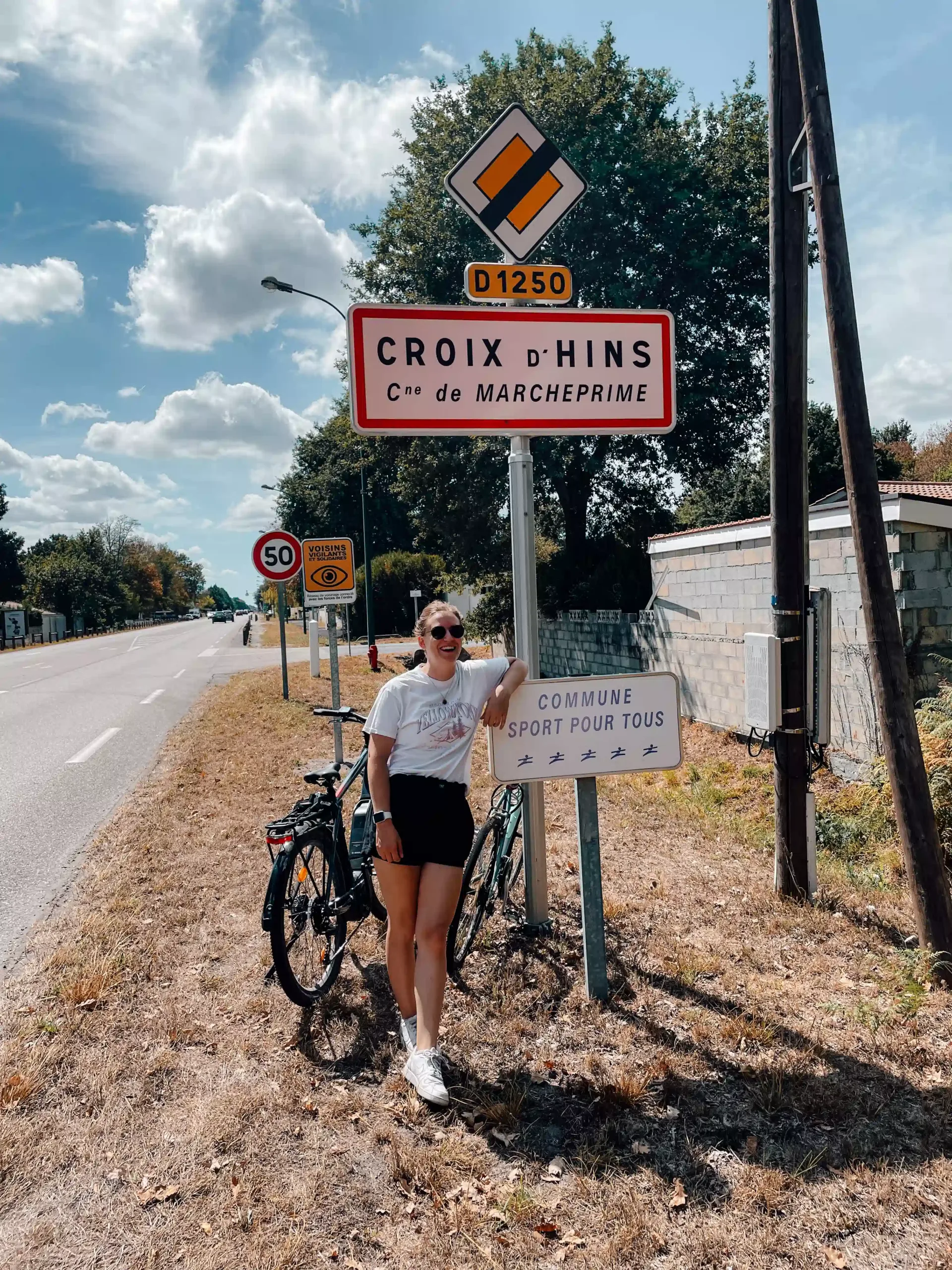Driving in any new country is always daunting. Each destination has its own signage, rules, and etiquette that can be confusing and unknown to tourists. But the freedom and flexibility of having a car make it so worth it! To help you feel a little more prepared for your trip, this article will go over everything you should know about driving in France!
The French have a bit of a reputation for their driving. They are sometimes seen as fast, and aggressive drivers which can make the thought of driving there even more stressful. I lived in France for 2 years and have gone on several road trips in various regions. To top it off, I also have family there who we’ve been visiting for over 8 years. I can confirm that driving in France is a little different than in North America.
BUT you’ll be happy to know that there are also similarities and for the most part, the differences are pretty easy to get a hang of quickly. It just helps to know the rules and etiquette in advance so you don’t have some angry French man honking at you for what seems like no apparent reason!
I’ll go over some common questions and road rules I think every tourist should know before driving in France. If you have any further questions, feel free to drop them in the comments below and I’ll try to help the best that I can. Or you can book a consultation call with me and we can discuss your France travel plans on a 1-on-1 level!
*Disclosure: This article contains affiliate links. If you make a purchase after clicking one of these links, I earn a small commission at no extra cost to you.
Do I need an international driver’s license?
If your license is written in the Roman alphabet, your license is valid in France, but it’s still required to have a translation of your license. According to the French Embassy in Canada, your license “must be valid and either written in French or accompanied by an official translation into French or an international license”. It is also important to know that your car rental will probably require a translation as well. You are allowed to drive in France for up to 1 year with your home license, after that you’ll have to exchange it for a French one.
If you want to know the regulations for your country, you can refer to the Government of France website here!
How do you get an international driving permit? For Canadian citizens, you can get them from CAA and American citizens can get them from AAA. They are usually valid for 1 year but you will have to pay a small fee.
YOU MIGHT ALSO LIKE: Summer in France: Best places to visit

Where should I rent my car in France?
My personal go-to for car rentals in Europe has been through rentalcars.com. I use them because they compare the cost of several rental car companies all on one site, so I tend to find the best deals there. You can find all of the official rental car agencies on there including Sixt, Hertz, Europcar, and Thrifty.
All you have to do is input your travel dates and location, and it will pull information from the various websites for you. Everything is summarized including car size, price, mileage, reviews, and more. I highly recommend using rentalcars.com, we’ve had no problems so far!
To keep in mind: you need to be 18+ if you are thinking of driving in France. If you are between the age of 21-25, many car rental agencies will charge you more for renting a car. Also, the driver will most likely need a CREDIT CARD in their name for a deposit when you first arrive. Remember it is the driver who needs to use their card for the deposit!
Is it difficult to drive in France?
This is the main question I am asked about driving in France. There are some specific road rules (which I’ll go over below) that I think will make your experience driving in France a lot easier. But generally speaking here are some quick things to know:
🚗 France drives on the right-hand side of the road.
🚙 Cars are generally smaller compared to North American ones. This makes it easier to park on the narrow city streets.
🚘 They predominantly use manual cars, not automatic ones. It is rare to find automatic cars for car rentals and they tend to be more expensive. If you are not comfortable driving a manual car and can’t find an automatic, driving in France will be more difficult and I wouldn’t recommend it.
🏎️ The speed limits are generally higher compared to North America.
Want something a bit more personalized? If you want to discuss or would like help planning your trip to France, check out my custom travel planning services on Thatch!

What are some road rules in France?
Watch out for radars and the speed limit
Ok, back to speed limits. The French take this very seriously and there are radars everywhere. You might notice drivers suddenly change of speed when you’re close to one. A radar is a machine that will ‘flash’ if you are even slightly over the speed limit so you really want to keep an eye on your speed or use cruise control when you can.
You will often see signs of the speed limits but in case you don’t, in France the speed limits are:
- 50km/h in urban areas – the moment you enter a city or town, this is the new speed limit even if there is no sign.
- 80km/h outside urban areas on two-way roads with no median
- 110km/h on double carriageways with a median (100km/h when it rains)
- 130km/h on motorways (110km/h when it rains)
PRO TIP: Many French people use Waze as their GPS because it notifies you when you are close to a radar.
If you do get a speeding ticket, you’ll have to pay for it here: https://www.amendes.gouv.fr/tai
The left lane is for passing ONLY
This is a HUGE mistake tourists make that really gets French people angry. The left-hand lane, most specifically on motorways, is for passing only. You should not be driving in the left or central lane! If you do, you’ll probably get honked at, or they’ll flash their lights at you.
The rule of thumb is to just move back over as soon as you pass safely. I think that doing this one thing will make your experience driving in France a lot easier. Most of the time people don’t realize how important this is in French driving etiquette and it really will make things less stressful for you if you stay in the correct lane.

Anticipate A LOT of roundabouts
This is another major difference compared to driving in North America. France is littered with roundabouts, so you should brush up on the rules of roundabouts before going. Here are some general tips to keep in mind:
- When approaching a roundabout, if you are in the right lane, you are taking the first exit. The middle lane, if applicable, is for going straight (which is usually the second exit) and the left lane is for going straight or left (usually the third exit). Be aware, there are often more than 3 exits in a roundabout, and make sure you are in the correct lane before you reach the roundabout.
- The people in the roundabout have priority.
- If you are taking the first exit, you should drive in the right lane in the roundabout. If you are taking a different exit you should drive in the left lane in the roundabout.
- Always use your right signal to indicate when you are leaving the roundabout.
- If you miss your exit, no stress just go around again.
PRO TIP: If you have friends in the car and someone is navigating for you, ask them which number exit you are taking (ie, you’re taking the 3rd exit). Make sure you are in the correct lane when approaching the roundabout and then just simply count the number of exits. It’s the easiest way to avoid getting confused!
No turning right at a red light and the right has priority
The only time you are allowed to turn right at a red light in France is if there is a flashing orange arrow pointing right on the traffic light. But remember, you do not have the right of way. It’s orange to indicate you should turn cautiously.
Something else to keep in mind is that when driving in towns and cities, cars on the right often have priority. What I mean by that is that while driving, if a car approaches from a small street on the right and doesn’t have a stop sign, they might have the priority meaning you will have to stop for them. Its called “priorité a droite”.
It is a very complicated rule that is very different for tourists to understand. My best advice is when driving in towns and cities, keep an eye out for stop signs and if there isn’t one, slow down and drive cautiously just in case.

Be aware of the alcohol limit and don’t be on your phone
According to the French Embassy in Canada, “The authorized amount of alcohol in the bloodstream is 0.5g/litre. It is reduced to 0.2g/litre for public transport drivers, bearers of probationary licenses, and learner drivers.” It’s best to avoid driving immediately after having a drink in France. If you are planning a wine excursion or tasting, arrange other transportation to be safe!
And like most countries now, it is prohibited to hold phones while driving in France. But France also has banned having headphones on while driving as well. You can get a fine of around 135 euros.
YOU MIGHT ALSO LIKE: Complete 1-week road trip budget for Germany and Alsace
Other things to keep in mind while driving in France
Parking in France
If you are parking in a street, be aware you’ll want to be comfortable with parallel parking. If you aren’t, look for a parking garage or parking lot. When parking in the street, a lot of the time its paid parking and you’ll know when it says “payant” written on the floor. You’ll most likely need to know your license plate when you go to pay at a parking meter, so have a photo ready on your phone to refer to! If it doesn’t say “payant” you should still look for signs to be sure. Sometimes parking is free after certain hours or on certain days.
Parking in a garage or a parking lot is very similar to my experience in North America. You’ll want to keep your ticket with you so you can pay at a kiosk. I’d advise researching cheaper parking lots before you start your drive because parking lots can be expensive.

Be aware of what type of gasoline you need
It’s best practice to clarify with your car rental agency what type of gas your car requires. In France, you’ll generally notice 2 types of options. “Gazole” means diesel and “Sans plomb” means unleaded. Make sure you choose the correct type of gas but most often, rental cars will use diesel.
PRO TIP: Avoid filling up on the highways. Like most countries, the gas prices are significantly higher on highways and you can often find way cheaper prices in towns and cities.
Watch out for cyclists and motorcycles
Motorcycles will weave in and out on any road. Always be checking your blind spot for them because they do often pass cars this way. There are many cycle roads in France so cyclists shouldn’t be too hard to anticipate. But in major cities especially, you’ll want to always be checking for cyclists in all directions, the same goes with pedestrians.

In case of an emergency…
You can call 112 to contact emergency services in France. All rental cars are also equipped with yellow vests that you are required to wear when you exit your vehicle. They also provide you with orange safety cones that you can place on the road.
Tips for planning a France road trip
💰Budget for tolls! When driving in France, if you are on an “A” road, an autoroute, this generally means it is a toll route. For example, the A1, A13, or A10 are all toll routes. The price of tolls really adds up quickly in France, so keep this in mind when planning your route. My best advice is to use Mappy when travel planning because it will give you an estimate of how much tolls will cost for that particular journey – and it’s been very accurate so far!
🗺️ Use a GPS. This is probably really obvious but sometimes international travellers forget about this when it comes to their international phone plan. You’ll need a GPS for sure. Roads in France are not often in a square pattern so they can get confusing, even for French people. Using a GPS app such as Waze is the easiest way to navigate the roads in France.
🧳 Avoid leaving valuables in your car. This is a sad reality but break-ins are common in France, especially if you park your car on the street overnight. The best way to avoid this is to park your car in a garage or look for accommodations that have parking included. You also should NEVER leave valuables in the car or at least leave them well hidden in the trunk.
Ready to start driving in France?

The goal of this article was to leave you feeling prepared to drive in France. I hope by now you have an idea of what to expect, what to avoid, and some best practices to have an enjoyable experience driving in France. I tried to include everything I could think of here to make this as helpful as possible so you can have the best time exploring France!
If you have any other questions drop them below or book a consultation call with me and we can discuss your France travel plans on a 1-on-1 level!

















